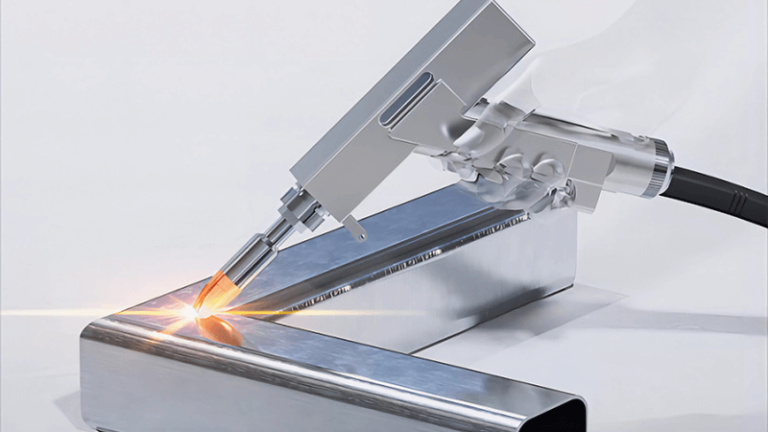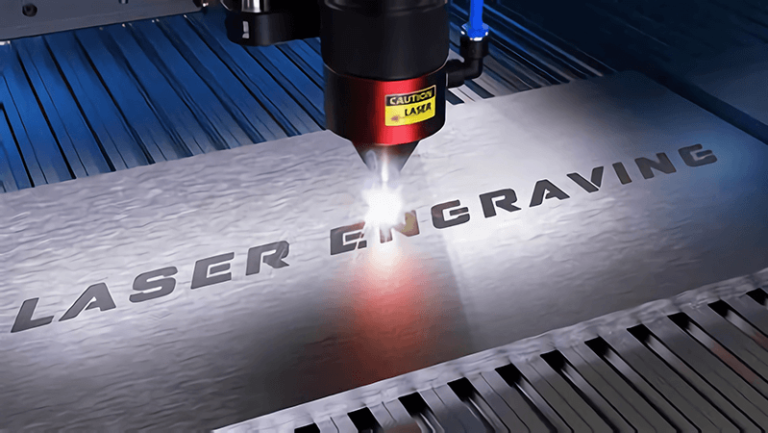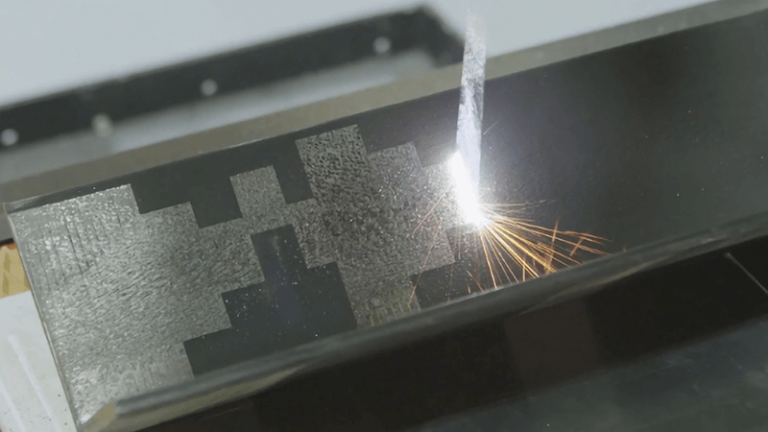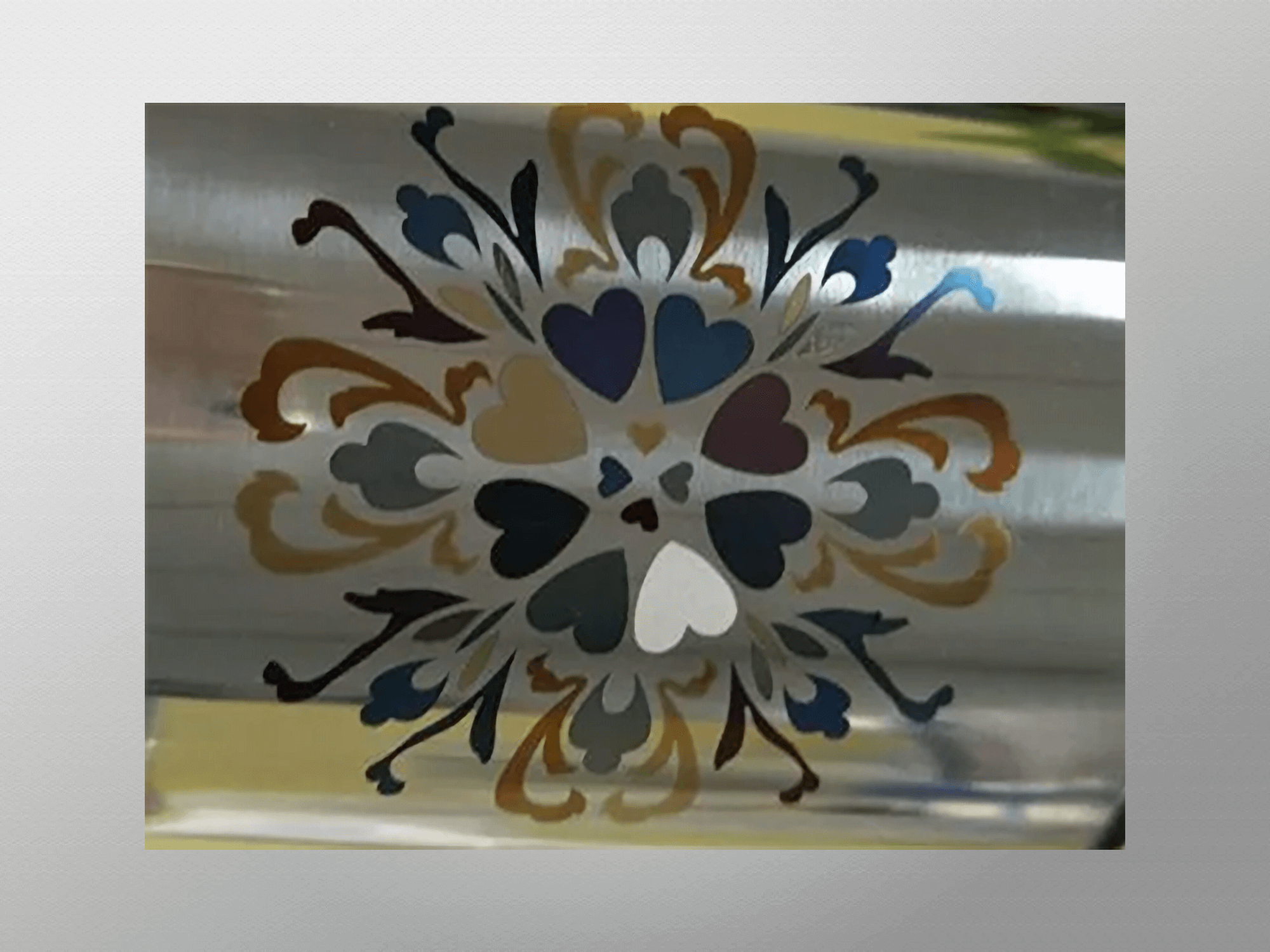
Introduction
MOPA (Master Oscillator Power Amplifier) laser marking machines are revolutionizing the way industries approach high-precision marking and engraving. Unlike traditional fiber lasers, MOPA technology offers greater control over the pulse width and repetition frequency, enabling businesses to mark a wide range of materials with impeccable detail. Whether it’s for metals like stainless steel or plastics and ceramics, MOPA lasers provide unmatched versatility and quality. In this guide, we’ll explore what makes MOPA lasers so special, how they work, their advantages, and how to choose the best machine for your business needs.
MOPA lasers are gaining traction across multiple industries due to their ability to deliver superior precision and flexibility. These lasers stand apart from traditional fiber lasers because of their adjustable pulse duration, allowing for optimal results on various materials, from electronics to automotive parts and even jewelry.
The machines are highly versatile, offering detailed marks on both metals and non-metals without damaging the material. MOPA lasers also help improve production efficiency thanks to faster marking speeds and enhanced accuracy. When selecting a MOPA laser marking machine, businesses should consider factors such as power requirements, speed, software compatibility, and marking area size to ensure the best fit for their needs.
For businesses that rely on laser marking for precision and quality, investing in a MOPA laser can provide a significant edge. As industries continue to demand faster, more detailed production, MOPA technology will play a pivotal role in meeting these challenges. In the following sections, we’ll dive deeper into the applications of MOPA lasers, how to maintain them for long-term performance, and key considerations when choosing the right machine for your operations.
What is a MOPA Laser Marking Machine?
When it comes to precision and high-quality laser marking, MOPA (Master Oscillator Power Amplifier) laser marking machines are setting new standards in the industry. This technology enhances the capabilities of traditional fiber lasers by allowing for precise control over pulse width and frequency, which is crucial for various marking and engraving applications. But what exactly is a MOPA laser, and why should you consider using it in your production line?
In simple terms, a MOPA laser is a special type of fiber laser marking system that allows for greater control over the laser's power and pulse duration. This makes it possible to achieve ultra-fine marks on a variety of materials with extreme precision. For industries requiring high-quality and customizable markings, MOPA lasers are quickly becoming the go-to solution. And trust me, I’m not just saying this because I work in the laser industry—I’ve seen the difference firsthand.
MOPA lasers can mark both light and dark materials with ease.True
The adjustable pulse width allows MOPA lasers to mark light and dark materials with precision.
MOPA lasers are only suitable for metallic materials.False
MOPA lasers can mark a wide range of materials, including metals, plastics, ceramics, and some composites.
How Does MOPA Laser Marking Work?
MOPA lasers stand out from other laser marking technologies due to their ability to vary the pulse width, making them incredibly versatile. This flexibility allows the machine to adjust the laser’s energy output, providing cleaner, more detailed marks. So, how does it work?
At its core, a MOPA laser consists of two main components: the master oscillator and the power amplifier. The master oscillator generates the laser beam, while the power amplifier boosts the intensity of that beam. By manipulating the master oscillator’s pulse duration, MOPA lasers can deliver multiple pulse settings, enabling precise control over how the laser interacts with the material.
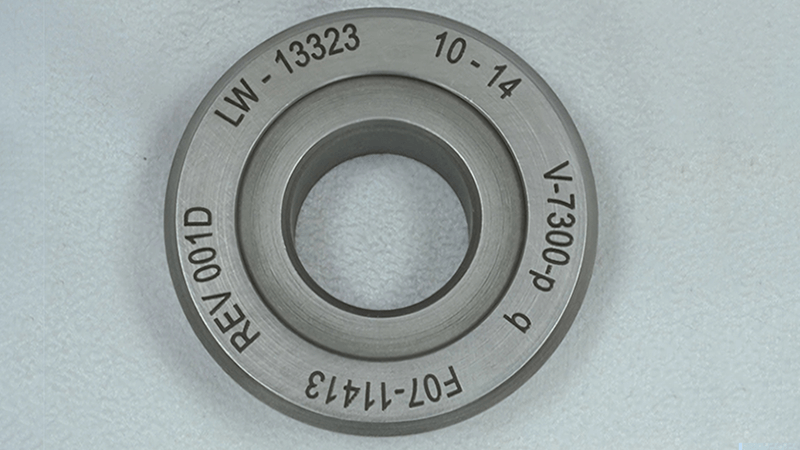
Key Features of MOPA Lasers
-
Adjustable Pulse Duration: One of the standout features of MOPA lasers is their ability to adjust pulse duration from as short as 4 nanoseconds to longer durations, depending on the application. This flexibility allows users to optimize the laser's interaction with different materials, reducing thermal damage during processes like engraving or cutting.
-
High Pulse Frequency: MOPA lasers can operate at higher pulse frequencies (up to 4,000 kHz), compared to traditional fiber lasers, which typically operate at lower frequencies. This capability enables faster marking speeds and higher precision in engraving intricate designs.
-
Color Marking: MOPA lasers can create various colors on metals such as stainless steel and titanium by carefully manipulating pulse duration and frequency. This feature is particularly useful for decorative applications or branding.
What Makes MOPA Laser Different from Fiber Lasers?
Many people wonder how MOPA lasers compare to traditional fiber lasers, and that’s a great question. While both technologies use fiber optics for the laser generation, the primary difference lies in the pulse modulation.
Traditional fiber lasers typically have a fixed pulse duration, meaning they’re limited when it comes to adjusting the laser’s intensity for different materials. MOPA lasers, however, can vary the pulse width and repetition frequency, offering more control over the laser beam’s characteristics. This makes MOPA lasers ideal for applications requiring a balance between high-speed marking and high-quality finishes.
Key Aspects Difference Between MOPA Laser and Fiber Lasers
- Design and Functionality
-
MOPA Lasers: These consist of two distinct components: a master oscillator (which generates the laser pulse) and a power amplifier (which boosts the laser output). This design allows for precise control over the pulse width, frequency, and energy, offering greater flexibility.
-
Fiber Lasers: Fiber lasers integrate both the pulse generation and amplification within a single fiber structure. While simpler, this design lacks the flexibility in adjusting the laser parameters independently.
- Pulse Control Capabilities
- MOPA Lasers: MOPA lasers provide precise control over pulse characteristics, such as width and frequency, making them ideal for tasks requiring accuracy, like engraving sensitive materials or creating color markings on metals.
- Fiber Lasers: Traditional fiber lasers have fixed pulse characteristics, making them less adaptable for applications that need fine-tuned control. They excel in high-speed cutting but fall short for more nuanced tasks.
- Applications
-
MOPA Lasers: Their ability to adjust pulse settings makes MOPA lasers versatile for a wide variety of applications, including:
- Marking and engraving on plastics and sensitive metals
- Creating color markings on stainless steel
- Minimizing thermal damage during processing
-
Fiber Lasers: These are best suited for:
- High-speed cutting of metals like steel and aluminum
- Applications requiring stable output power and high beam quality
- Thermal Management
-
MOPA Lasers: Due to their adjustable pulse durations, MOPA lasers generate less heat during operation, reducing the heat-affected zone (HAZ) and minimizing the risk of thermal damage or discoloration on delicate materials.
-
Fiber Lasers: While they are effective for cutting thicker materials with high peak power, fiber lasers generate more heat, which can cause unwanted effects, such as thermal damage or discoloration, when working with sensitive substrates.

MOPA vs. Q-Switched Lasers: A Comparison of Fiber Laser Technologies
MOPA (Master Oscillator Power Amplifier) and Q-Switched lasers are two common types of fiber lasers, each with its own set of characteristics and applications. Below is a detailed comparison of their structure, working principle, output parameters, applications, and advantages/disadvantages.
- Structure and Working Principle:
- MOPA Laser
A MOPA laser operates by using electrical pulses to drive a semiconductor laser chip that generates a seed pulse. This seed pulse is then amplified by a power amplifier. The key feature of MOPA lasers is that the pulse width and repetition rate are independently adjustable, offering high flexibility.
- MOPA Laser
- Q-Switched Laser
A Q-Switched laser generates pulse light output by periodically increasing or decreasing the optical loss within the resonator. It has a simpler structure and is more affordable. However, the pulse parameters are more limited compared to MOPA lasers.
- Output Optical Parameters
- MOPA Laser
MOPA lasers offer adjustable pulse widths ranging from 2ns to 500ns and can achieve repetition rates up to MHz. This makes MOPA lasers suitable for applications requiring high processing efficiency and precision.
- MOPA Laser
- Q-Switched Laser
The pulse width of Q-Switched lasers is generally fixed, typically ranging from 80ns to 140ns, and the repetition frequency is relatively low, usually around 100kHz.
- Applications
-
MOPA Laser
MOPA lasers are ideal for applications that demand high precision and processing efficiency, such as fine marking on electronic product housings or drilling on thin metal sheets. -
Q-Switched Laser
Q-Switched lasers are suitable for applications where high processing precision is not a strict requirement but speed is essential, such as marking and cutting general materials.
- Advantages and Disadvantages
| Laser Type | Advantages | Disadvantages |
|---|---|---|
| MOPA Laser | - Adjustable pulse width and frequency for a wide range of processing needs. | - More complex structure. |
| - High processing accuracy and efficiency. | - Higher cost. | |
| Q-Switched Laser | - Simple structure. | - Fixed pulse parameters. |
| - Lower cost. | - Limited flexibility. |
MOPA lasers can only be used for simple designs due to limited precision.False
MOPA lasers offer high precision, making them ideal for intricate designs, even on small marks.
MOPA lasers are ideal for marking delicate materials like jewelry without causing damage.True
MOPA lasers provide the precision necessary to engrave intricate designs on delicate materials like jewelry without causing damage.

Main Parameters of MOPA Fiber Laser Marking Machines
MOPA (Master Oscillator Power Amplifier) fiber laser marking machines are renowned for their precision, versatility, and adaptability across a wide range of materials. These machines offer advanced features that make them highly suitable for applications requiring fine marking, engraving, and high-quality surface treatments. The following table outlines the key parameters of MOPA fiber laser marking machines, providing insights into their technical specifications, such as output power, pulse frequency, and scanning speed. This will help you understand the capabilities of MOPA lasers and how they can be tailored to meet the needs of various industrial applications.
| Parameter | Details |
|---|---|
| Output Power | Common options: 20W, 30W, 50W, 60W, 100W. Some models may offer up to 120W depending on the application needs. |
| Pulse Repetition Frequency | Typically from 1 kHz to 10,000 kHz (10 MHz), offering flexibility for different materials and marking effects. |
| Pulse Width | Adjustable from 6 ns to 250 ns. A narrower pulse width reduces heat-affected zone and improves accuracy. Some models range from 4 ns to 200 ns. |
| Scanning Speed | Can reach up to 7,000 mm/s or higher in advanced systems, ensuring efficient processing times. |
| Marking Line Width | Adjustable between 0.03 mm and 0.1 mm, with some advanced systems achieving a minimum of approximately 0.01 mm. |
| Marking Area | From small formats (100 mm x 100 mm) to larger areas (300 mm x 300 mm), suitable for various workpiece sizes. |
| Cooling Method | Air cooling is commonly used for effective temperature management during extended use. |
| Laser Wavelength | Standard wavelength of 1064 nm, suitable for a wide range of materials, especially metals and some plastics. |
What Are the Advantages of MOPA Lasers for Marking?
MOPA lasers offer several distinct advantages over other laser marking technologies. First and foremost, they provide high precision, especially for materials that are typically harder to mark, such as stainless steel and titanium. The adjustable pulse width allows for greater versatility, letting you mark both light and dark materials with equal ease.
The ability to fine-tune the pulse frequency also translates into better results when working with complex designs or smaller marks. This feature is especially important in industries like electronics, automotive, and jewelry, where attention to detail is paramount. But that's not all—MOPA lasers also deliver faster processing speeds, increasing production efficiency.
Which Materials Can MOPA Laser Marking Machines Work With?
MOPA laser marking machines can be used on a wide range of materials, both metallic and non-metallic. This includes metals like stainless steel, aluminum, brass, and copper, as well as plastics, ceramics, and even some composites.
The key advantage of MOPA lasers here is their ability to adapt to different materials. For instance, when marking metals, the ability to control the pulse width means you can prevent burning or overheating, which often happens with less advanced lasers. For plastics, the MOPA's fine pulse control ensures that you can create sharp, clean marks without damaging the material’s surface.
Applications of MOPA Laser Marking Machines
MOPA laser marking machines are highly versatile and used across multiple industries. Some of the most common applications include:
- Electronics: MOPA lasers can be used to mark components like circuit boards and connectors with serial numbers or logos. The precision ensures minimal damage to sensitive electronics.
- Automotive: Manufacturers use MOPA lasers to mark VIN numbers, part numbers, and even small logos on car parts, all while maintaining the part’s integrity.
- Jewelry: Fine jewelry often requires detailed engraving, and MOPA lasers provide the precision needed to create intricate designs without damaging delicate materials.
As industries evolve, the use of MOPA lasers continues to grow, driven by the need for more efficient and high-quality production processes.
MOPA laser marking machines are compatible with most CAD or design programs.True
Some MOPA lasers offer advanced software that integrates with CAD or design programs, making them easier to use in existing workflows.
MOPA lasers require no maintenance to function at peak performance.False
MOPA lasers require regular maintenance, including cleaning the lens and inspecting the cooling system, to ensure optimal performance.
How to Choose the Right MOPA Laser Marking Machine for Your Business?
Choosing the right MOPA laser marking machine depends on several factors, including your specific needs, budget, and production scale. Here are a few things to consider:
- Power Requirements: Depending on the materials you’ll be working with, you’ll need a laser with the appropriate power rating. Higher power machines are needed for thicker materials.
- Speed: If your production line requires quick turnaround times, look for machines that offer faster marking speeds.
- Software Compatibility: Ensure that the laser machine is compatible with the software you already use in your workflow. Some MOPA lasers offer advanced software that integrates with CAD or design programs.
- Size of Marking Area: Consider the dimensions of the items you’ll be marking. Choose a machine with a suitable marking area to avoid bottlenecks.
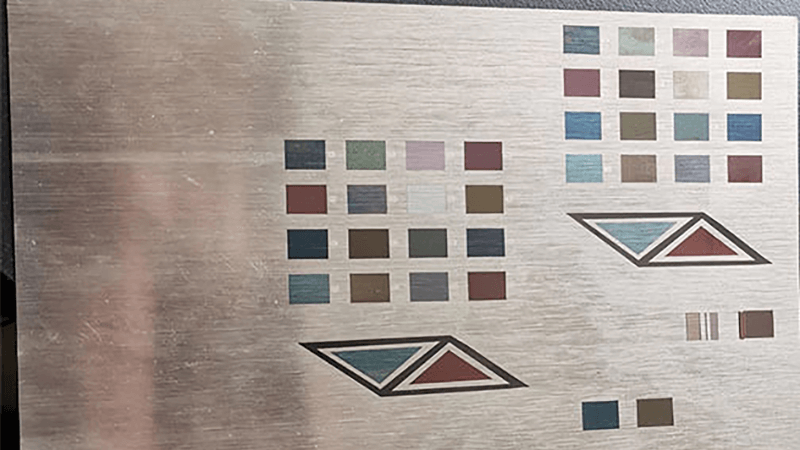
MOPA Laser Maintenance and Troubleshooting Tips
Like any other precision machinery, MOPA laser marking machines require regular maintenance to ensure optimal performance. Here are some tips:
- Clean the lens regularly: Dust and debris can affect marking quality. Keep the lens clean using a soft cloth and cleaning solution.
- Check cooling systems: Overheating can damage the machine. Ensure that your cooling system is functioning properly, especially during long production runs.
- Inspect the fiber cable: Fiber cables should be free from bends or kinks, which could affect the laser’s performance.
If you notice any issues, such as inconsistent markings or poor beam focus, it's usually best to consult the manufacturer’s troubleshooting guide. Common problems often relate to misalignment or software settings, both of which can be fixed with a few adjustments.
Conclusion: Is MOPA Laser Marking Right for You?
MOPA laser marking machines offer incredible precision, versatility, and speed, making them an excellent choice for businesses looking to enhance their production quality. Whether you're in electronics, automotive, or jewelry manufacturing, the ability to mark a variety of materials with ease gives you a competitive edge.
If you're looking to take your marking to the next level, MOPA technology might just be the solution you need. So, don’t wait—upgrade your marking game with MOPA today! Contact us!
References:
- "The Complete Guide to Laser Machine Engraving", From Kirin Laser.
- "How to Choose the Right Laser Engraver Machine for Your Business", from Kirin Laser.
- "The Benefits of a Laser Marking Engraving Machine for Industrial Use", from Kirin Laser.
- "Top Laser Machines for Engraving: A Buyer’s Guide ", from Kirin Laser.
- "Mopa Laser Marking Machine", from Hindcam.
- "What is a MOPA laser?", from Justlaser.


